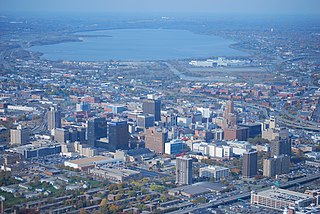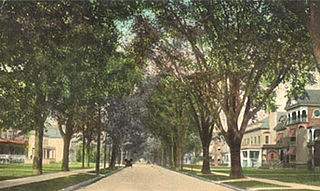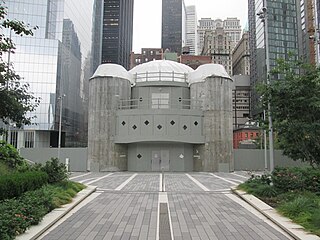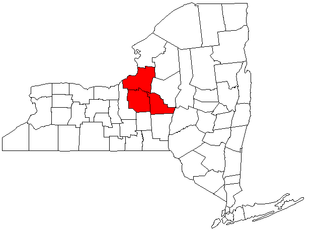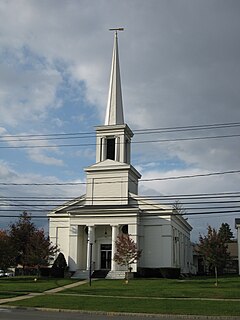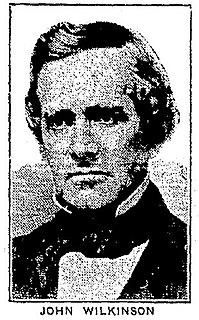History
The Greek population in the United States did not start growing until the 1880s. The largest waves entered the country from 1900 to 1920 and most were young males "who wished to make a fortune and then return to Greece," although 70 percent ended up staying in America. In the early 20th century, most immigrants from Greece were from Laconia, in particular, the city of Sparta in Southern Greece. Since that time, immigration has diversified and new citizens come from all parts of Greece. [4]

The United States of America (USA), commonly known as the United States or America, is a country comprising 50 states, a federal district, five major self-governing territories, and various possessions. At 3.8 million square miles, the United States is the world's third or fourth largest country by total area and is slightly smaller than the entire continent of Europe's 3.9 million square miles. With a population of over 327 million people, the U.S. is the third most populous country. The capital is Washington, D.C., and the largest city by population is New York City. Forty-eight states and the capital's federal district are contiguous in North America between Canada and Mexico. The State of Alaska is in the northwest corner of North America, bordered by Canada to the east and across the Bering Strait from Russia to the west. The State of Hawaii is an archipelago in the mid-Pacific Ocean. The U.S. territories are scattered about the Pacific Ocean and the Caribbean Sea, stretching across nine official time zones. The extremely diverse geography, climate, and wildlife of the United States make it one of the world's 17 megadiverse countries.
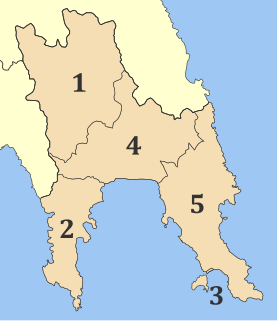
Laconia is a region of Greece in the southeastern part of the Peloponnese peninsula. Its administrative capital is Sparta. The word laconic is derived from the name of the region by analogy—to speak in a concise way, as the Spartans were reputed by the Athenians to do.

Sparta was a prominent city-state in ancient Greece. In antiquity the city-state was known as Lacedaemon, while the name Sparta referred to its main settlement on the banks of the Eurotas River in Laconia, in south-eastern Peloponnese. Around 650 BC, it rose to become the dominant military land-power in ancient Greece.
The largest number of Greeks arrived during 1900-1910, a total of 686 and between 1911–1920, another 385 arrived. The Immigration Acts of 1921 and 1924 established quotas and in 1921, 3,063 Greeks arrived although in 1924 only 100 were admitted. A legal petition increased the quota and during 1925-1929 about 10,883 were accepted and another 17,000 were admitted under the Refugee Act of 1953. [4]
The Greeks came to the United States due to poor economic conditions occurring in Greece during the late 19th century. In contrast, the U.S. economy allowed for many unskilled urban jobs to open up. Most Greeks settled in large urban areas, especially in the Northeast and Midwest. The first Greeks to arrive settled in lower wage jobs such as peddlers, factory laborers and busboys. As they became more established, many were drawn to small businesses, including restaurants, flower shops and groceries. [4]
During the 1980 U.S. Census, 1,852 people claimed Greek heritage in Onondaga County. [5]
Greek influence in names
From the early days of settlement in Upstate New York, predating any substantial Greek immigration to the area, there were many communities that were named in honor of Greek history. These included Syracuse, Athens, Attica, Brutus, Corinth, Delhi, Fabius, Greece, Homer, Ilion, Ithaca, Manlius, Marcellus, Minerva, Mount Sinai, Olean, Ovid, Palmyra, Pompey, Scio, Sodus, Vestal, Seneca, Troy and Utica, among others.
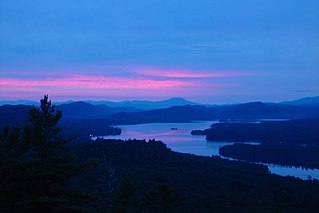
Upstate New York is the portion of the American state of New York lying north of the New York metropolitan area. The Upstate region includes most of the land area of the state of New York, but a minority of the state's population; it excludes New York City, the Lower Hudson Valley, and Long Island, although the precise boundary is debated. Major cities in Upstate New York include Buffalo, Rochester, Albany, and Syracuse.
Greek architecture
The Westside and Southwest once contained "some of the most elegant and attractive residences in Syracuse." Many were situated along West Onondaga Street and James Street. There were many Greek Revival mansions constructed during the late 19th century for former "prominent figures" of the area. [6]
Greek Orthodox churches
According to locals; "Family is very important to Greek people, it's a nucleus. Most churches are family centers, social centers, educational centers, not just spiritual centers." Throughout the years, newly arriving immigrants turned to the church for help adapting to life in the United States. [5]
Additionally, since the original Greek neighborhood in Syracuse is no longer intact, the church has become increasingly important for the community and is the "social and cultural center for local Greek-Americans." [5]
First celebration
Rev. John N. Muja'is, a Greek Orthodox missionary who had spent a year in the United States "ministering to his scattered brethren," celebrated the first Holy Eucharist and conducted services according to the ceremonies of the Greek Orthodox Church for the first time in the history of Syracuse on March 24, 1902. Since Father Muja'is spoke very little English, the services were conducted in Greek and Arabic. The priest wore the costume of his native land and a long white beard, so in appearance it was reported; "his is like a patriarch of old." [1]
Auburn church
The Greek residents of Auburn, New York organized a church society and a certificate of incorporation was filed in the County Clerk's office on October 22, 1900. At that time there were 75 Greeks in the city. The new church was named Greek Catholic Church of St. Peter and St. Paul. [7]
St. Sophia's church
St. Sophia's Hellenic Orthodox Church was incorporated in 1916 and services were conducted periodically in the chapel of St. Paul's Episcopal Church on Montogomery Street. In 1917, the church moved to the second floor of a social hall on South Salina Street. [5]
In 1922, the congregation built its first church on Montgomery Street, on the site of what is now the Onondaga County War Memorial. It became a "hub for newly arriving immigrants" who needed help adapting to the United States. [5]
When Onondaga County announced plans to build the war memorial in the late 1940s, the church moved to Massena and Grace Streets [5] in early 1950. [10] The new home was the former Good Will Congregational Church "with spacious accommodations for parish affairs." The parish invested "a lot of money to make it a first class center" for over 350 Greek families and a dozen religious and social organizations. The rector, Rev. John S. Kamelakis was a recent arrival and a native of Crete. Leaders of the church in 1950 were Nicholas O. Spinos, president; Nicholas Collis, vice-president; and James Copanos, secretary. [10]
The present church, St. Sophia's Greek Orthodox Church in DeWitt, was built in 1973. [5] By 1980, 550 Greek families, roughly 2,400 individuals,in the area were members of the church located on Waring Road. It is the only Greek Orthodox church in Onondaga County. Because the original Greek neighborhood in Syracuse is no longer intact, the church has become the "social and cultural center for local Greek-Americans." [5]
Greek affiliations
The social life of Greeks in the city seemed to begin in the early 1900s when the first stories were printed about local affiliations and events for newly minted Greek-Americans.
A committee representing the Greek residents of the city met at 357 South Salina Street on February 16, 1910 to prepare plans for the organization of a Greek society. Nicholas Valentine, a local resident who was "prominent in the movement" noted there were 500 Greeks living in Syracuse. It was felt that "a society of this kind would further the interests of the Greeks." [2]
In November 1910, Spiros Matzukas, Grecian soldier, orator, singer and poet visited the city, "preaching a new and greater Greece, and pleading for funds to increase that country's fighting power." Despite the fact that no publicity preceded his visit, other than dispatching of several messengers to the Greek families throughout the city, "more than 300 sons of Greece" gave the speaker a "rousing welcome" when he appeared in Genesee Hall. Within a short time he had received US$1,220 in cash from contributions of the "loyal Greeks" of Syracuse to their nation." Matzukas arrived from Rochester and was met by a delegation of the Greek merchants and businessmen of the city. The committee in charge of the meeting included; C. N. Constas, Nicholas Valentine, Nicholas Vanson, Speros P. Chaconas, John Alexander and John Cannelos. Although "practically every Greek in the United States" was familiar with his mission, Matzukas repeated the story of his work and explained that his plan was to secure enough donations from Greeks "resident in other than their own country," with which to add a modern battleship named America to the Greek navy. [11]
An Americanization league in the city during November 1919, held a gathering at Lincoln Hall at Central High School which was one of the largest attendances ever witnessed. The league was divided into seven branches, each one comprising future citizens of the United States of different European birth. These branches included the Italian, Syrian, Slovak Polish, Ukrainian, Armenian and Greek residents of Syracuse. The object of the monthly meeting were two-fold; To teach the foreign born population of Syracuse the English language and to educate them "along the lines of American principles and nationalism; and to bring the foreigners into closer and more sympathetic touch with the native born of the country." [12]
Greek independence day
By March 1953, there were approximately 4,000 Greek residents of Central New York and Northern New York. The observance of the anniversary of Greek independence was marked with a week-long program and many planned special events. The observance opened with celebration of a Mass in St. Sophia's Greek Orthodox Church. Later, two Greek students at Syracuse University talked briefly on the history of Greece. Hellenic folk and patriotic songs were sung. William Apostolo was master of ceremonies and Dr. Leonidos Chronis of Syracuse was president of the organization sponsoring the celebration. Leaders of the various Greek-American organizations comprised the committee. [3]
Greek Independence Day was observed in the city after Mayor Henninger signed a proclamation to pay tribute to those who fought in the revolution of 1821 to 1829 who were fighting for the sovereignty and freedom of their homeland. A special celebration in honor of the occasion was held the next day at the St. Sophia's Greek Orthodox Church hall, located at Massena and Grace Streets. A program of folk songs by the church choir, followed by dancing and refreshments were featured. Delegations from other communities in the area were present for the celebration. [13]
Greek cultural day
The annual Greek Cultural Festival is held at St. Sophia's Greek Orthodox Church in DeWitt. In 1988, in preparation for the 16th annual event, the festival organizers used more than 2,000 pounds (910 kg) of flour, 1,000 pounds (450 kg) of sugar, 300 pounds (140 kg) of filo and 800 pounds (360 kg) of butter, just for the pastries served during the festival. [14]
Men of the church serve traditional Greek food including souvlaki (grilled and skewered lamb or chicken), dolmades (stuffed grape leaves), stifatho, gyro, pastichio (Greek-style lasagna), Greek salad, spinach and cheese pita bread and moussaka (layers of seasoned eggplant and meat in a white sauce), along with Greek beer and wine in the "Taverna" under the tent. [15]
Women serve the Greek pastries such as baklava, kadaifi, spanakopitta, buourelakia, lyropitta, diples, finikia, kourambiades, koulouria, pitas and loukoumathes (honey puffs) with coffee. [15]
Besides the pastry offerings, the festival also highlights Greek art, crafts, music and dance and the St. Sophia Parish Council president notes that "It's our way of sharing our Greek heritage with our neighbors." The event has attracted as many as 10,000 to 12,000 people over a four-day period. [14]
